Living Future — the self-branded “unconference” for the deep-green branch of the green-building movement — lived up to its name earlier this month.
As one attendee put it, LF20 was “very unconference.”
She was referring, of course, to the International Living Future Institute’s nimble pivot to an entirely virtual event. That surely cut down on carbon emissions, which is a nice thing for a conference about regenerative design and construction. It also cut down on the networking, gossip and beer summits that are a core part of any annual get-together of professionals with shared values.
Still, the sessions and speeches were rich with a-ha moments. Here are seven that stood out to me:
1. Optimism in the face of depression is a bit like hope within crisis.
Last summer, organizers brainstormed this year’s theme — “Sustaining Hope within Crisis” — in reference to climate change. Then, the coronavirus appropriated the word “crisis.”
From the event’s start, however, climate change still dominated the mood and the discussion. The opening keynote speaker related to the climate challenge in starkly personal terms.
“How do you sustain hope when you can feel this loss so deeply?” Living Building Challenge founder Jason F. McLennan asked.
McLennan admitted to sharing an “existential depression” with many of his colleagues over the dearth of progress, for yet another year, on the climate crisis. Then, he hinged his pivot to optimism on COVID-19.
Maybe, McLennan argued, the “globally shared experience” of a pandemic will force us to focus on the slower moving but more broadly encompassing crisis of climate change. With a pun on 2020, he declared it “the year of perfect vision.”
“We’ve had a pause in our whole society,” he said, “and it’s time for us to get on with our job assignment.”
Second-day keynoter Katharine Wilkinson stuck mainly to the nuts and bolts of climate solutions. Given her role as lead writer and apostle for the relentless pragmatic Project Drawdown, her attention to fundamentals was unsurprising.
But Wilkinson looped her remarks within the broader point. More women and more people from other traditionally under-represented communities must be included in search for solutions, she argued, if only because social movements fail when they don’t broaden their appeal. And, she stressed, project teams themselves aren’t exempt from that demand for diversity.
Like McLennan, Wilkinson drew parallels between the two crises. Of both, she said, “Our current way of operating is clearly defunct.”.
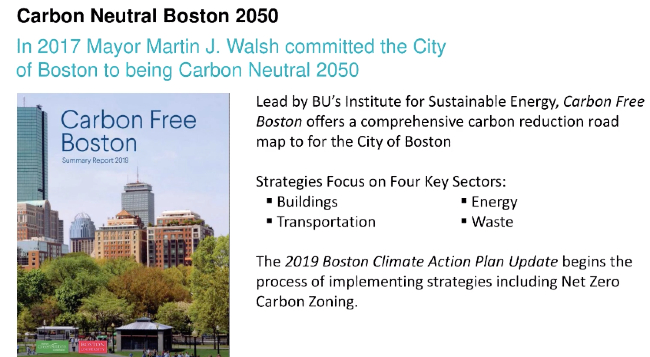
2. The cities and states that you’d expect to take a lead on fighting climate change? Yeah, they’re the ones following through on their carbon and clean-energy commitments.
That was clear in workshops focusing on efforts by Boston and Washington state to follow through on ambitious pronouncements.
Boston is one of 17 U.S. cities committed to meeting net-zero carbon standards by 2050. Washington is one of 24 states whose governors have committed to “reducing greenhouse gas emissions consistent with the goals of the Paris Agreement.” Meanwhile, the Sierra Club is keeping a list of commitments — currently at 150-plus U.S. cities, 10 counties and seven states that have pledged to rely only on renewable energy by 2050 at the latest.
It’s unclear, however, how many of those cities and states are on track toward those goals — or for that matter are even taking any meaningful action. The devil, of course, is in the details.
In a session on “Carbon Neutrality in Boston,” John Dalzell, senior architect for sustainable development for the Boston Planning and Development Agency, made it clear that his city is sweating those details. In a separate workshop on implementing Washington Gov. Jay Inslee’s executive order to get to zero energy and carbon, three state officials similarly got into the nitty-gritty.
To the general public, this is pretty arcane stuff. It seldom gets the public attention once the grand promises have been made. But such details will determine whether the commitments are actually kept.
One thing was clear: It ain’t easy. Any jurisdiction that’s serious about zeroing out greenhouse emissions will have to make tough choices.
“It doesn’t make sense to continue to invest in public infrastructure that isn’t resilient and doesn’t address climate impacts,” said Hanna Waterstrat, director of the State Efficiency and Environmental Performance Office.
Panelists in both sessions stressed the importance of the active role that top elected officials must play.
“Having that top level of support and awareness is really key,” Waterstrat said. But, she added, “high-level strategic goals [are] not enough.”
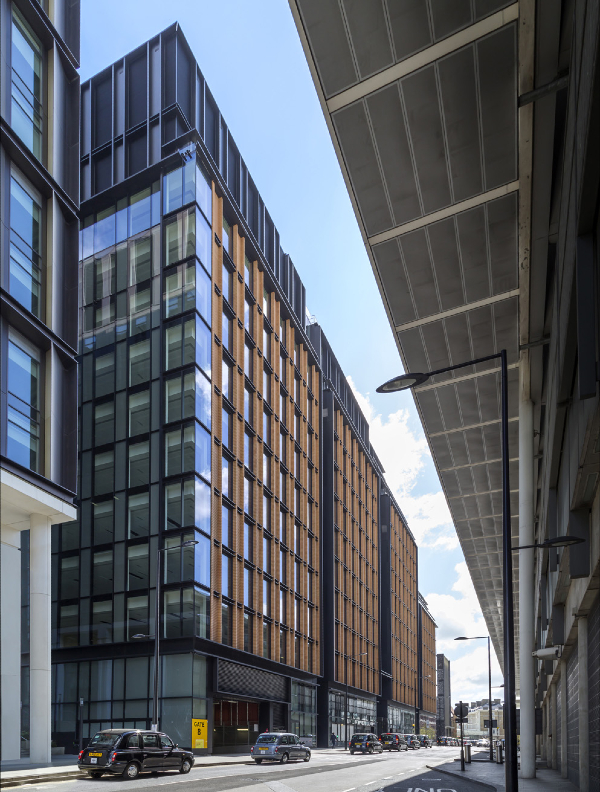
3. A few large companies are making commitments to reduce carbon output from their buildings at scale. Will others follow?
ILFI’s Zero Carbon certification got off with a bang at LF19, where it was announced that Kingspan and Salesforce had signed up for a volume scale pilot. Since then, Microsoft, announced its intention to pursue Zero Carbon on huge construction projects at its Puget Sound and Silicon Valley campuses. And then just before the 2020 conference, for a 370,000-square-foot office building in London, Google’s 370,000 6 Parnas earned the world’s first actual certification under Zero Carbon. (It was among 25 projects and products who’s certification was announced at LF20. View all of them here.)
The scale of these projects is a major step for ILFI. Commitments by other property owners to programs with similar goals outside of ILFI raise the scale even further.
There’s a paradox in the good news. Google, Kingspan, Microsoft and Salesforce are sector-leading companies that consistently have made good decisions for their shareholders. Yet, together, they influence only a tiny fraction of the world’s commercial real estate. So it’s difficult not to ask the obvious question: If these companies can achieve net-zero carbon, why aren’t more companies following suit? And when in the world are they going to take up action?
Which brings up our next takeaway …
4. Regenerative design needs to make a more compelling case to commercial real estate.
Three sustainability leaders from the commercial real estate world offered a daunting list of disconnects between conventional real estate and regenerative design. That’s not exactly surprising. But it’s still disappointing to hear that so much still stands in the way of expanding cutting-edge sustainability from its sweet spot among universities, environmental centers and other nonprofits.
One of the big hurdles: the decisive power of the “pro forma” — the cash-flow calculations built into owners’ expectations as they plan for returns on their investments. Some of the benefits of net-positive energy and a handful of other regenerative features can be counted dollars. But others — such as biophilic design and Red List free materials — are very difficult to translate to monetary terms.
Sara Neff, senior vice president for sustainability at Kilroy Realty Corp. in Los Angeles, argued that advocates, design teams and ILFI itself need to grapple with a host of other issues. Among them: the tax structures governing different ownership schemes, the repercussions of various types of leases, the hold periods for different classes of property owners, liability concerns, and “investment recoverability.”
Risk-averse investors want to feel secure about their cash flows, she said — not to worry whether a black-water treatment system will work as designed. And it remains difficult to convince owners that shooting for a rigorous goal like LBC certification will get them more value than simply being able to boast that they got LEED Silver.
All was not bleak, however. In an email to me later, the panel’s moderator — Marta Schantz of the Urban Land Institute’s Greenprints Center — lauded the “problem-solving ethos” of the regenerative building community.
“[A]ttendees leveraged the chat box to dive deeper into points that speakers made with creative ideas and brainstorms. … How special is that? For example, during [her session], one of the speakers mentioned challenges in finding a qualified [general contractor] who won’t shy away from LBC projects. Audience chatter delivered: multiple GCs chimed in, eager to work with developers on this! Another speaker discussed the value of case studies, and the chat box asked for more detail to make sure they deliver the right content (information specifically on real estate peers’/competitors’ projects, incremental cost data, and ‘buildings that look like mine’).”
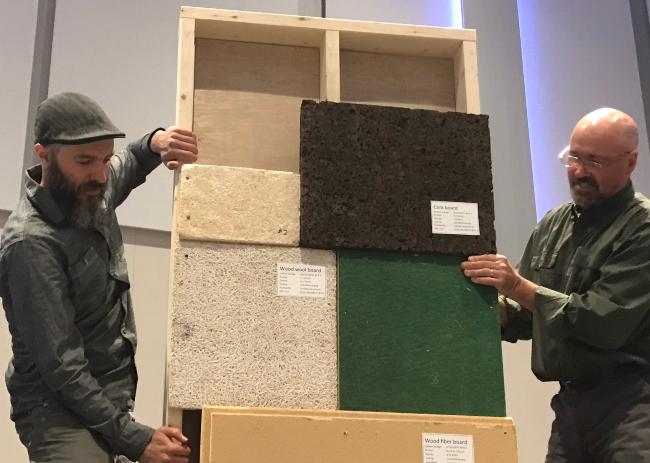
5. The building-as-carbon-sink movement gathers steam.
I guess “steam” is a loaded word in this context. But some builders, architects and product manufacturers are going ahead and stepping beyond carbon neutral. In one LF20 session, three evangelists for storing carbon in building materials — Jacob Deva Racusin, Chris Magwood and Ace McArleton — catalogued substantial progress for the ultimate regenerative concept.
As Sara Draper of the LBC-certified Kern Center at Hampshire College put it in an email, “I was left smiling.” She continued:
Not only do we have the power to reduce the carbon footprint of buildings through smart material choices, we can actually create CARBON NEGATIVE buildings NOW. Even better, we can build these with products and materials that are already familiar to many builders, like cellulose, mineral wool, and structural timber. As we so often learn in sustainable design, it’s not always about awaiting the next revolutionary product (though many exist!), it’s about truly understanding the impact of design decisions so we can make better ones. We have all we need to do good, and that’s empowering.
Racusin, Magwood and McArleton focus on residential and light commercial construction. But there’s also early adoption of the building-as-carbon-sink movement in the commercial-product manufacturing sector. An Interface executive used LF20 to announce that this fall his company plans to introduce a “carbon negative carpet tile … that ultimately benefits the planet by storing carbon.”
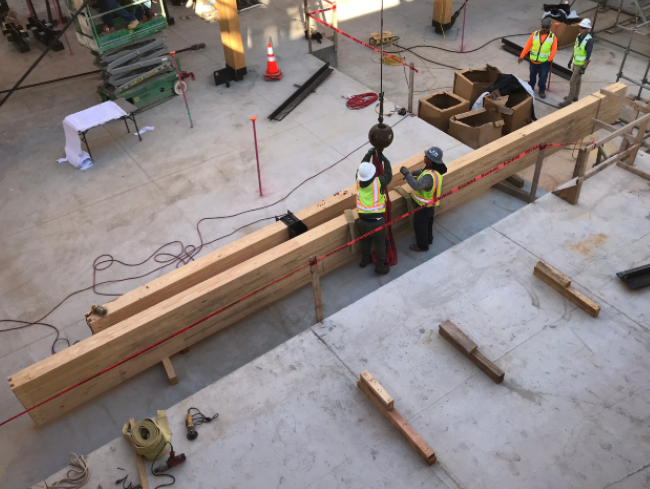
6. The Kendeda Building team downloads a few lessons.
The Living Building project our organization funded at Georgia Tech has provided an intimate, real-time look at a major regenerative building (partly through the Building Chronicle category on this website). Just seven months after opening, however, the 47,000-square-foot building had to close for the pandemic. That puts an unusual spin on any after-report.
Still, project team members were out in force at LF20, offering up lessons, trumpeting successes and admitting to some challenges.
On one of three video tours of Living Building projects, Building Director Shan Arora noted that before the project began there were questions about the viability of such an ambitious project, both because of the South’s hot and humid physical climate and its more conservative political climate.
“We’ve taken that conversation off the table,” he argued, pointing to the building’s net positive energy performance, as well as its mass timber structure.
Mass timber doesn’t just highlight the wood, he noted. It makes a tangible argument that sustainable construction can help the forest products industry, which is one of Georgia’s largest employers. “This wood right here,” he said, as the camera showed the building’s glulam columns, helps to shift “what could be a divisive conversation about climate” into an argument for economic development.
In a separate session, the Kendeda Fund’s Dennis Creech acknowledged the tensions between priorities for different stakeholders. Occasionally, Georgia Tech and the design team were hesitant to take a few of the riskier (and more expensive) features that Creech would suggest to them. Georgia Tech’s emphasis was bound to be on completing the building, he noted — while carefully not faulting the university for its institutional responsibilities.
“Our goal was not just to build a building,” he said. ”Our goal was to change the way buildings are built in our region.”
One lesson learned: Even in a large institution on a major project with a sprawling team, the key to moving a specific goal forward is to identify “champion” for whom a idea is important. That idea, he added, extends beyond the project team. In a state that had never permitted a potable water system for an individual building, it helped to approach regulators early and to enlist them in the problem solving.
Which brings up another point Creech made: Earlier LBC projects “paved the way” for the Kendeda Building by advising the project team to contact state officials. Similarly, the Kendeda Building was paying it forward by educating state regulators and laying the groundwork for more regenerative projects in Georgia.
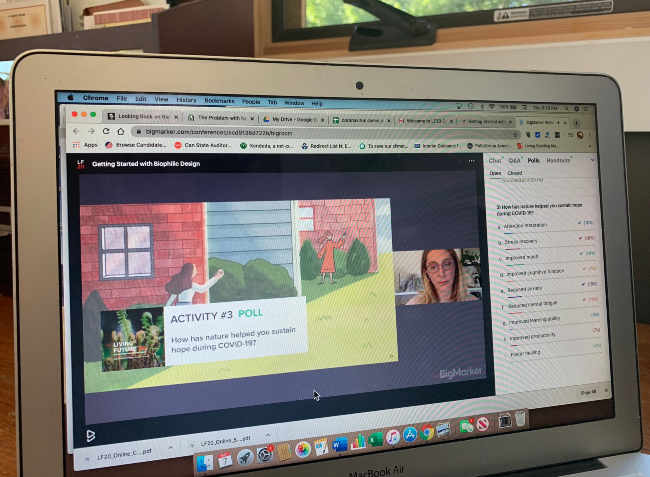
7. Nobody really knows what the SARS-CoV-2 has wrought for the building sector.
That’s probably one reason that climate change and carbon remained the more talked about “crisis” in this conference. As the Kendeda Fund’s Creech told me, “I don’t think anybody has a real good idea yet on how [COVID-19] is going to affect buildings.”
There are some educated guesses, however. Demand for commercial real estate is likely to stay down for a while, “It’s not going to be good for the next six months,” Kilroy Realty’s Neff said in one session.
That may be an understatement — and not just because of the economic downturn. Over the last few months, we’ve all gotten used to remote work. A lot of us aren’t particularly eager to put ourselves in harm’s way by hanging out in an office.
But will design and construction impacts be lasting? Will work stations get battlements? Will ASHRAE drastically change HVAC standards? Will cities try to get people off of buses and on to bicycles? Will antimicrobial surfaces become ubiquitous (over the objections of toxicologists)?
Or will an effective vaccine eradicate the threat and allow things to slide back toward “normal?”
In one fundamental way, there was widespread hope at LF20. Again and again, participants predicted that the current crisis would bolster efforts to fight the long-term crisis on which many of us are more focused. Much as McLennan kicked off LF20 by arguing that our shelter-in-place period would amount to reset, others stressed one crisis would underscore the importance of viewing the big picture to a broader community of architects, engineers, builders and owners. Not just to the true believers.
PHOTO AT TOP: Avinash Rajagopal, editor-in-chief of Metroplis, interviews Katharine Wilkinson after her keynote. Photo by Ken Edelstein.
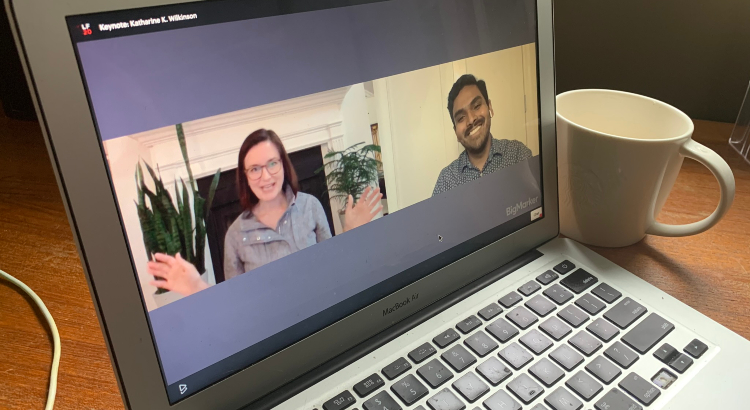


Thanks for the nice write up Ken! Hope you are well.
I agree, the virtual unconference was filled with many nuggets. In a strange way, there was greater presence with the live chat – being able to hear what folks were thinking/responding in real time – though of course, not seeing folks in person was very hard. ILFI staff did an incredible job making this a special experience.
Definitely, Brad. I always want to avoid being too much of homer because I need editorial distance makes the coverage more credible. But honestly, I don’t know how they made such a nimble shift. All I can think of is: Coffee!